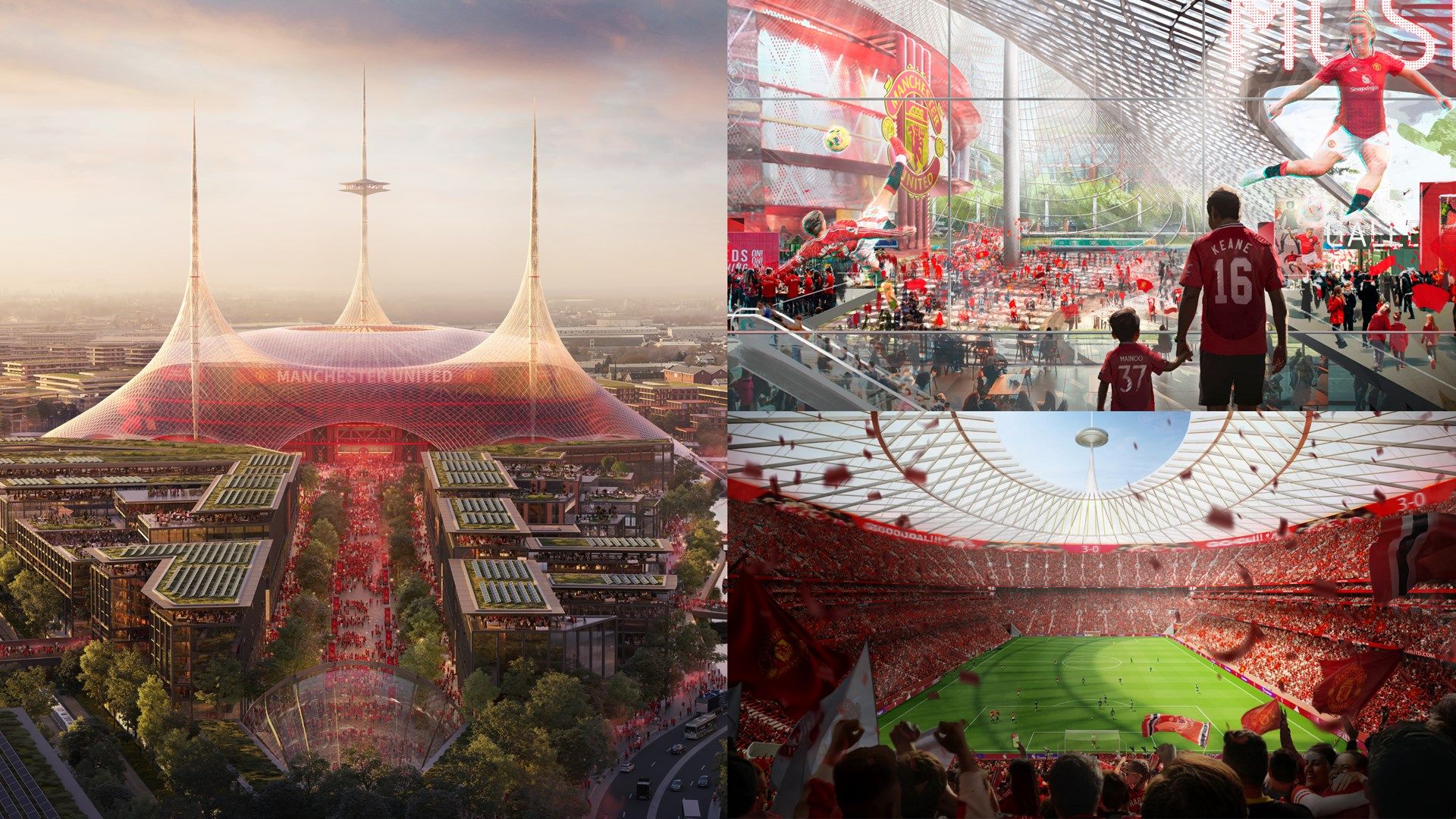Manchester United Stadium Bid for 2035 Women’s Final
Manchester United stadium plans have moved from bold sketches to a concrete roadmap, with the club intent on replacing Old Trafford with a 100,000-seat super-arena that could stage the 2035 Women’s World Cup final. The £2 billion project, driven by co-owner Sir Jim Ratcliffe’s vision of a “Wembley of the North,” is designed to deliver a global showpiece venue and revitalise the surrounding district in one ambitious swoop.
Manchester United Stadium Vision
Ratcliffe’s blueprint combines modern Premier League requirements with the grandeur of international tournament standards. The new Manchester United stadium is expected to feature a single-tier South Stand that dwarfs its current counterpart, a retractable roof to guarantee weather-proof spectacles, and expansive concourses modelled on the NFL experience. Club architects insist the ground will be instantly recognisable from aerial television shots, echoing the silhouette status that Old Trafford has enjoyed for more than a century.
Timeline Toward 2035 Women’s World Cup
With the United Kingdom the sole declared bidder for the 2035 tournament, United believe opening the Manchester United stadium by 2030 gives FIFA and UEFA five full seasons of test events before a potential final. That schedule is ambitious yet plausible, according to project engineers, who claim key preparatory work can begin while the men’s and women’s first teams temporarily relocate to a refurbished Leigh Sports Village and an upgraded Etihad Campus lease deal.
Proposed Construction Schedule
• 2025-2026: Final planning approval, environmental assessments, and tendering
• 2027: Demolition of the Stretford and Sir Bobby Charlton stands; ground-breaking ceremony
• 2027-2029: Core steel structure and roof installation
• 2030: Interior fit-out, technology integration, and safety trials
• 2031: First competitive fixture at the Manchester United stadium
Financing the £2 Billion Dream
United have yet to confirm whether the stadium bill will be covered by equity injection from INEOS, fresh borrowing, naming-rights partnerships, or a mixed model. Sources close to the Glazer family favour a blended approach: long-term commercial loans secured against future match-day revenue, plus a headline naming deal that could eclipse Tottenham’s record-breaking £25 million-per-year ask. Ratcliffe, meanwhile, has publicly stated his preference for keeping “Manchester United” in the ground’s formal title, hinting at “partner-led wings” rather than a wholesale rebrand.
Impact on Women’s Football and the Local Community
Staging a Women’s World Cup final in Northern England would be transformative. Local councils estimate £350 million in tourism spending across Greater Manchester, while studies from Euro 2022 show a 50 percent spike in grassroots girls’ registrations following major events. The Manchester United stadium proposal includes a dedicated women’s high-performance centre on site, complete with a 5,000-seat arena for academy matches, ensuring tangible legacy beyond a single summer tournament.
Legacy Beyond the World Cup
Community outreach plans involve turning the vast forecourt into an daily open plaza akin to Melbourne’s Federation Square, hosting concerts, esports finals, and winter markets. Club executives say the wider redevelopment could create 15,000 construction jobs and 3,000 permanent roles, with living-wage guarantees written into early drafts of the contract.
Potential Roadblocks and Contingencies
Even with political goodwill, megaprojects of this scale rarely avoid delays. Supply-chain disruptions, fluctuating steel prices, and changes in UK planning law could force Ratcliffe to adjust timelines. Club insiders concede a two-year contingency buffer is already baked into spreadsheets. If deadlines slip, the 2035 tournament could yet be allocated to the revamped Wembley; however, the Manchester United stadium team insists their “double-shift” construction model provides vital wiggle room.
What Happens to Old Trafford?
Fans are split between nostalgia and necessity. While the current “Theatre of Dreams” façade inspires emotion worldwide, its plumbing, concourses, and roof design belong to another era. Preservationists have floated the idea of retaining the listed East Stand façade as a museum frontage, similar to what Real Madrid achieved during the Bernabéu revamp. Early artist impressions suggest a commemorative garden on the existing centre circle, allowing supporters to walk the line where legends once roamed.
Fan and Expert Reactions
Supporters’ groups largely welcome the ambition but want guarantees that ticket prices will not skyrocket to fund construction. “We need it to feel like home, not a corporate theme park,” says MUST spokesperson Rachel Hughes. Stadium finance analyst Kieran Maguire believes the Manchester United stadium could add £120 million per season in match-day and commercial revenue, provided the women’s team plays at least eight WSL fixtures there annually.
Final Thoughts
The new Manchester United stadium is more than an architectural statement; it is a strategic play to cement the club at football’s commercial and cultural apex for decades. Should the timeline hold, lifting the Women’s World Cup trophy under its lights in 2035 would provide a poetic curtain-raiser to a new era in M16.
Opinion: United’s grand design feels both overdue and oddly risky. If they balance heritage with innovation and keep fans central to the process, the reward could redefine Northern football. Get the financing wrong, however, and even a World Cup final might not silence the doubters.
Your global gateway to nonstop football coverage:
News Goal
Share this content:

